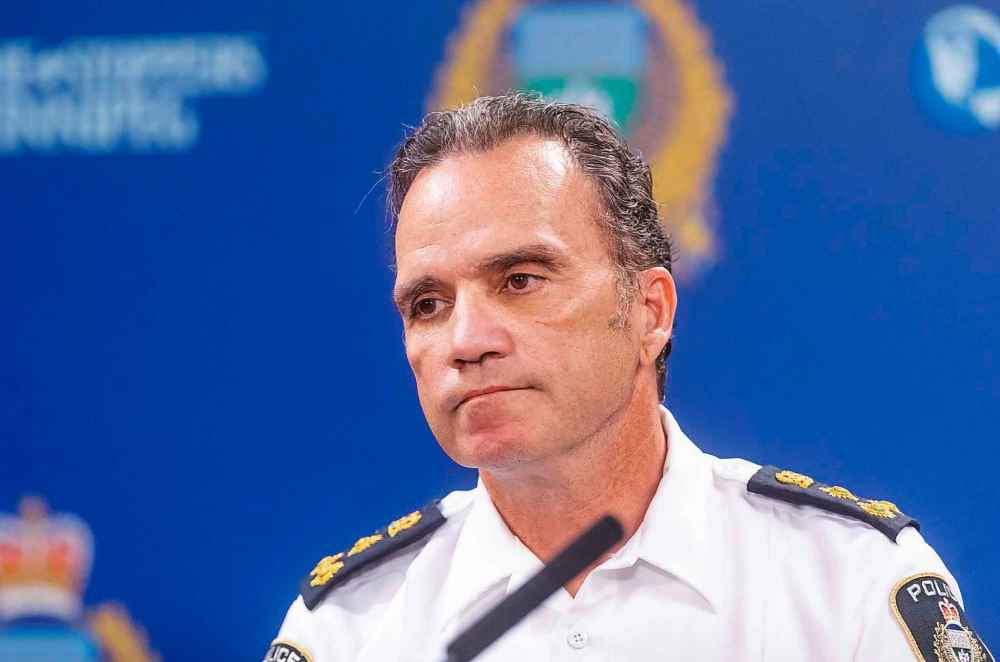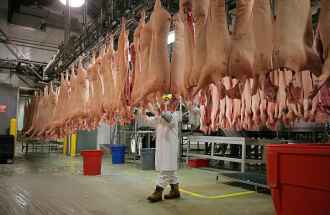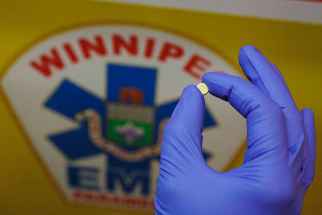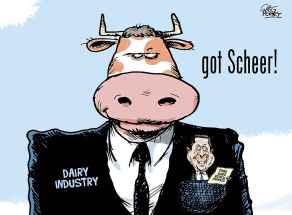Meth crisis needs fix from province
Read this article for free:
or
Already have an account? Log in here »
To continue reading, please subscribe:
Monthly Digital Subscription
$0 for the first 4 weeks*
- Enjoy unlimited reading on winnipegfreepress.com
- Read the E-Edition, our digital replica newspaper
- Access News Break, our award-winning app
- Play interactive puzzles
*No charge for 4 weeks then price increases to the regular rate of $19.00 plus GST every four weeks. Offer available to new and qualified returning subscribers only. Cancel any time.
Monthly Digital Subscription
$4.75/week*
- Enjoy unlimited reading on winnipegfreepress.com
- Read the E-Edition, our digital replica newspaper
- Access News Break, our award-winning app
- Play interactive puzzles
*Billed as $19 plus GST every four weeks. Cancel any time.
To continue reading, please subscribe:
Add Free Press access to your Brandon Sun subscription for only an additional
$1 for the first 4 weeks*
*Your next subscription payment will increase by $1.00 and you will be charged $16.99 plus GST for four weeks. After four weeks, your payment will increase to $23.99 plus GST every four weeks.
Read unlimited articles for free today:
or
Already have an account? Log in here »
Hey there, time traveller!
This article was published 24/07/2019 (2330 days ago), so information in it may no longer be current.
Winnipeg got more bad news on the crime front this week. For the fifth year in a row, the city’s crime rate grew, according to the Winnipeg Police Service’s annual report, released Monday.
That has put a greater focus on the need to combat Winnipeg’s growing methamphetamine problem.
Violent crime remained relatively flat in 2018 compared with 2017, the report showed. However, there were some categories — including robberies and firearms offences — that rose sharply.
Statistics Canada, which also released crime figures this week, reported that Winnipeg’s violent-crime severity index — which assigns greater weight to more serious offences such as robbery and homicides — increased four per cent last year.
Property offences, up 19 per cent, were the biggest driver behind last year’s soaring crime numbers. Almost all types of property crime saw an increase, including break and enters, motor vehicle thefts and thefts under $5,000.
Overall, crime grew 12 per cent in Winnipeg and was 33 per cent above the five-year average.

!function(e,t,s,i){var n=”InfogramEmbeds”,o=e.getElementsByTagName(“script”)[0],d=/^http:/.test(e.location)?”http:”:”https:”;if(/^/{2}/.test(i)&&(i=d+i),window[n]&&window[n].initialized)window[n].process&&window[n].process();else if(!e.getElementById(s)){var r=e.createElement(“script”);r.async=1,r.id=s,r.src=i,o.parentNode.insertBefore(r,o)}}(document,0,”infogram-async”,”https://e.infogram.com/js/dist/embed-loader-min.js”);
Those are disappointing numbers, especially after Winnipeg saw a decline in its crime rate over several years leading up to 2014. Crime in Winnipeg is still lower than it was 10 years ago, which means efforts by police and government to curb criminal behaviour have had some impact over the years.
Nevertheless, the fact it’s on the rise again is troubling. Winnipeg police Chief Danny Smyth attributes much of the increased criminal activity to the meth crisis that has gripped the city. Police are seeing more violent and erratic behavior on the front lines from people addicted to the deadly drug. It’s putting police officers, medical personnel and the public at greater risk.
There are no quick-fix solutions to combat the illicit drug problem. But Smyth believes government, primarily the province, could take immediate action to support police and provide greater assistance to drug users.
Specifically, Smyth would like to see the creation of detoxification centres, where drug users could get immediate attention and have access to longer-term treatment. Smyth would also like to see government create safe spaces for drug users.

Those were among the recommendations found in a tri-level task force report on illicit drug use released last month.
The new crime data has renewed a war of words between Mayor Brian Bowman and the Pallister government on how to combat the meth problem. Like the police chief, Bowman believes the province could take action now to improve treatment for drug users. He has accused the province of dragging its feet on the matter.
In his defence, Justice Minister Cliff Cullen says close to half the recommendations in the task force report have been implemented.
That may be. But it’s become increasingly clear the province could do much more. The task force report found gaps in the system that prevent drug users from getting the long-term treatment they need. Drug users often don’t know where to get help. When they do find it, they can face long delays in accessing treatment, the report found. In many cases, there is no followup when, for example, drug users are brought to a hospital emergency department for assessment.
A robust response from the province would address both the short-term needs identified by Smyth and the gaps in long-term treatment laid out in the report.
We have not seen that level of commitment from the province. Until we do, Winnipeg’s crime problem will likely get worse.
















